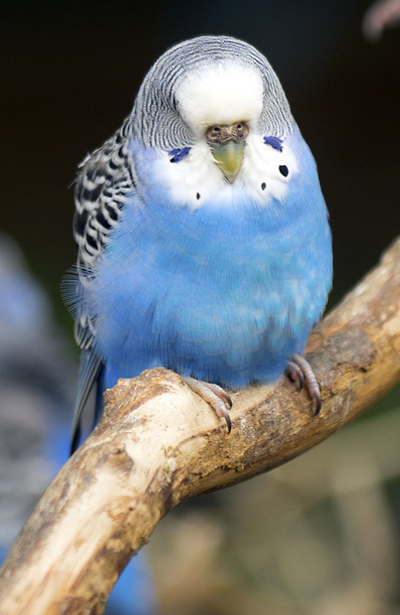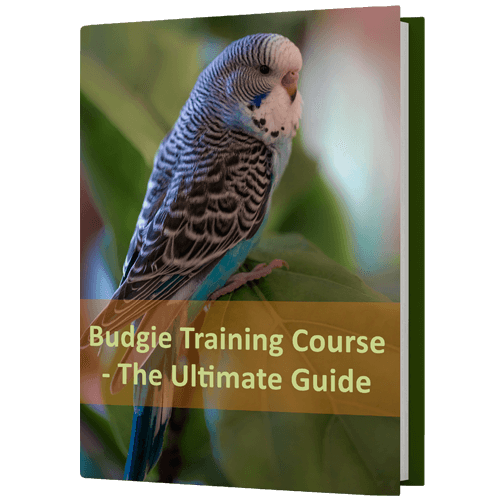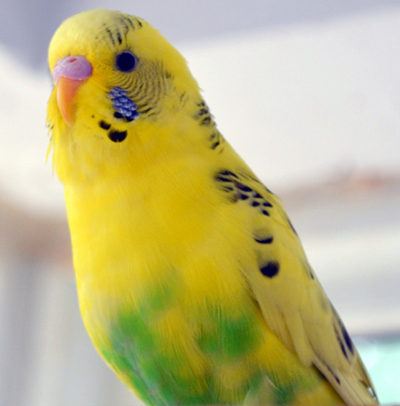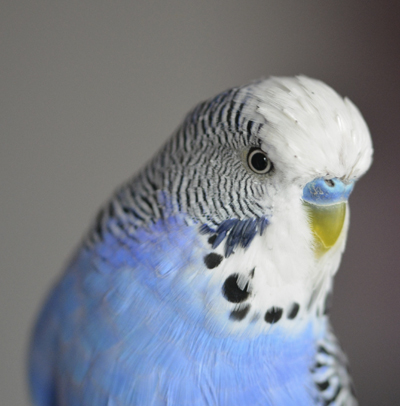
Information on Budgie Facts, Care, Temperament & Health
Budgies (budgerigars) are an extremely popular pet bird, and for good reason. These small parrots make delightful pets, and are usually friendly and easy to tame. While they can sometimes be difficult to understand, they are quite capable of mimicking speech.
Sign-up for the Free Course on Budgie Training
Size: 12 - 16 cm / 5 - 6 inches
Life Expectancy: 10 - 15 years
Description
The typical coloration of the Budgie is green with black bars on the wings, back and head. Mature females have a tan or beige cere (nose) and the males have a bluish cere, but this is unreliable in some color variations and young birds of both sexes have pink ceres.
Young budgies have bar markings on the forehead that recede with age, and their eyes have dark irises that gradually become gray with age, but again this doesn't necessarily hold true for all colors. Through selective breeding a huge variety of colors and patterns are available, such as violet, blue, yellow, pied, albino, and more.


